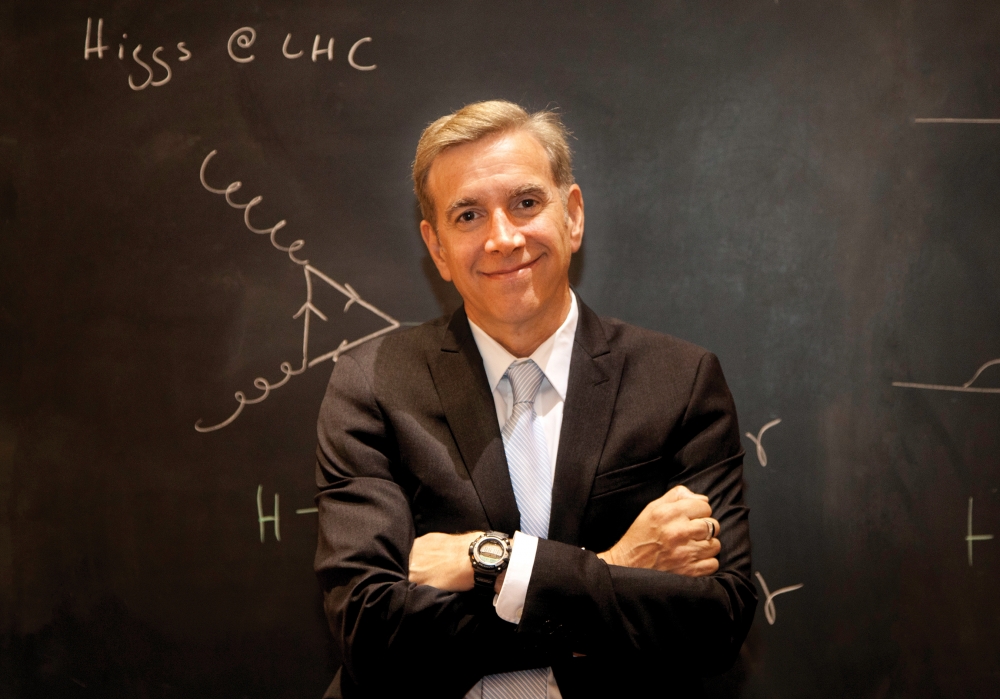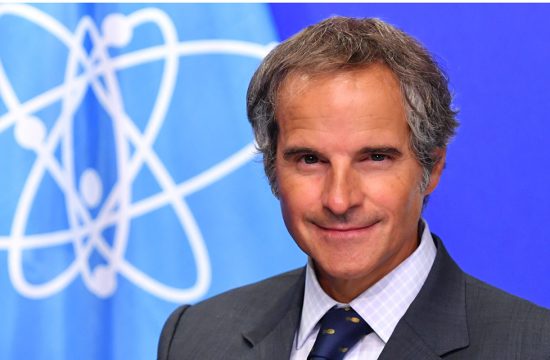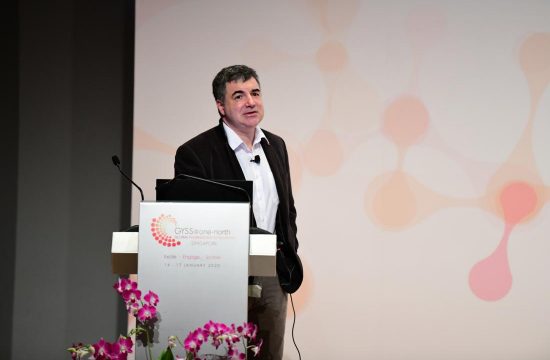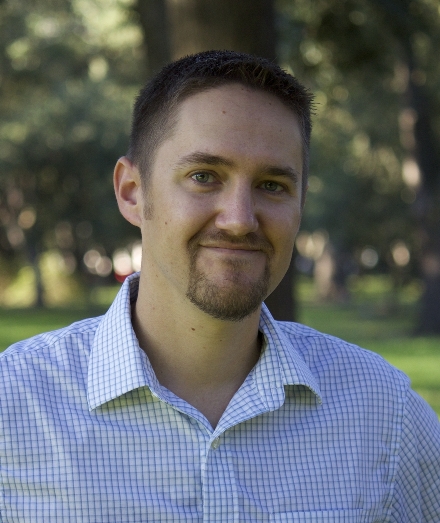KATYAYANI CHOWDHRY |

The following interview is the concluding part of the earlier published article of the same name.
Dr. Joseph Incandela, Particle Physicist, Spokesperson for the CMS Experiment at CERN, Geneva, discusses antiparticles, the LHC, and the sensational Higgs Boson below.
Q1/Since the boson was discovered, how has this enhanced the understanding of the working of the Standard Model?
J.I./ Well, in some ways it has no impact on our understanding of the Standard Model (SM) because the particle we found seems to have all of the predicted characteristics. On the other hand, the one thing that the SM does not predict is the mass of the Higgs boson and our prior data could only constrain the mass to be in the range from about 114 to around 1000 GeV. The mass value is now very precise because we have recently combined the data from the two big experiments. We find (see http://arxiv.org/pdf/1503.07589.pdf):
mH = 125.09 ± 0.21 (stat.) ± 0.11 (syst.) GeV
This value has interesting implications. For instance, if the universe has a very elegant symmetry between particles with integer spin (bosons) and ones with half-integer spin (fermions) known as Supersymmetry (SUSY), then we generally would expect to find a Higgs boson that is very much like the one in the Standard Model but restricted to a mass below about 130 GeV. Our measured value is consistent with this, but nevertheless is too high for most of the more simple and elegant versions of SUSY out there that generally predicted a value closer to 120. On the other hand, if there is nothing but the Standard Model, one would have expected the mass to be a bit higher, like 140 GeV. So the actual value fell between these two possibilities and this may be a clue to something very profound. The reason I say this is that at a value of 130 GeV, it appears the universe may be in a metastable state. This is something we discussed earlier. The universe could someday undergo a transition in which the existing Higgs field disappears, causing electrons to be massless, among other things, which would mean that all matter would disintegrate. The current estimates of the mean lifetime of a universe like our own is very very long, so one need not worry! With more data, our understanding of this should improve.
Q2/ If gravitons are discovered, by corollary they must have their antiparticles.
By extension, what would be the implications practically in such a universe with Anti-Gravitons?
J.I./ I am glad you asked this question because it allows me to clarify something that often confuses people. When we talk about anti-matter, this should not be taken to be the antithesis of matter per sec. One might take the terminology to imply, for instance, that anti-gravitons would provide anti-gravity! This is not the case.
An anti-particle is one that has the same mass as the corresponding particle, but all of its other properties are the opposite. So, ironically, the mass which most people think of as ‘matter’, is the only thing that is not different! The properties that are the opposite are things like the electric charge or strong force charge (known as color). In terms of the mathematics describing elementary particles, you can obtain an antiparticle from a particle via certain transformations like charge conjugation. Some particles are not changed at all by these transformations. For example, a particle with no charge or color is unchanged by any transformation that would flip the charge and color to their opposites. This is the case for gravitons. The graviton is its own antiparticle. So, nothing new here.
Q3/ When the universe was created and matter formed, where did all the anti- matter go? Why have we not been able to see any practical evidence of it especially as symmetry is so assumed in the universe?
J.I./ Ah, you are asking a billion dollar question here! We would love to know the answer to this question and there are many efforts underway to try to understand this better. Matter and antimatter were produced symmetrically but we have found that after they are produced, there are ways in which this symmetry can erode. I.e. there are asymmetries in how the particles evolve and decay relative to their antiparticles. So it is possible that over time, one could build up more matter than antimatter. That said, the asymmetries we have found thus far are not big enough to explain the dominance of matter in the universe that we observe. So there must be something else involved. There are a number of ideas out there and hopefully future findings will help us to resolve this. It may even turn out to be related to other things we are trying to find and understand like Dark Matter. It is a great puzzle for future experiments, and future generations of scientists!
Q4/ If the detection of under Planck sized particles is inversely proportional to mega particle accelerators, what is the next/ future step or level of the LHC? Or is there some new venture being undertaken in this regard?
J.I./ No matter what we see or do not see at the LHC in the next 20 years, we know that we will need to press to higher energies than the LHC can attain. If we see some new particles, they are very likely to be the lowest mass particles of a whole new spectrum that can only be accessed with a more powerful machine. If we see no new particles, then it is critically important to go up a big amount in energy to find new particles or to really understand how isolated the Standard Model is. In view of this, there are programs underway to understand what it would take to build a machine and detectors to reach as high as 100 TeV, which is 7 times the peak energy of the LHC at 14 TeV. I recently joined one of the coordination groups for these studies. It is very interesting and very challenging. It would require some new technologies that would have important spin-off applications in industry and medicine.
Q5/ Do you personally think it is possible to include quantum gravity in the much romanticized Theory Of Everything?
J.I./ I do not have much involvement in this area and have only followed the work that is ongoing here from afar, so you should take what I say with a grain of salt! But yes, I do believe we will eventually understand this and incorporate gravity into a broader framework of the quantum field theoretical description of our universe’s fundamental laws. This will probably require a major breakthrough in theoretical physics but could come from something unexpected like breakthroughs in our understanding of how to calculate particle interactions. In the past decade or so, some big surprises came in this area, leading to a resurgence of interest in what we call ‘scattering theory’. I believe it will happen, but I have no idea how long it will take!
As told to Katyayani Chowdhry (on the 7th of July 2015)
The LHC or Large Hadron Collider, will be undergoing successive cleaning processes to optimize its’ performance this month.
Its continual run leads to entrapment of electrons and gas molecules on the beam-pipe walls. On interaction with the electric field created with running beams, these trapped molecules get released and even more electrons set off, both interfering with the high vacuum conditions of the LHC. They form fuzzy clouds that negatively affect the beam stream.
The solution: circulate intense proton beams at lower energies, to shake off the molecules on the metal walls and reduce electron accumulation.
This will keep the LHC squeaky clean, at an ultra high vacuum and pressure condition of 10 -10mb, enabling the run of 1000 proton bunches/beam with 50 nanoseconds bunch spacing.
Let’s wait and watch what the next big thing it delivers, this fall, hopefully.
(KATYAYANI CHOWDHRY IS A FREELANCE JOURNO/ AUTHOR. HER DEBUT TRILOGY IN SPECULATIVE FICTION, SHUNYATA- BEING FEMININE IS DIVINE, IS NOW AVAILABLE AT AMAZON AT THIS LINK: http://www.amazon.co.uk/SHUNYATA-BEING-FEMININE-IS-DIVINE-ebook/dp/B00VNSOBZI SHE CAN BE CONTACTED AT : katyayanichowdhry@gmail.com)
Source : CERN ; Title Courtesy : Author Arundhati Roy, God of Small Things








